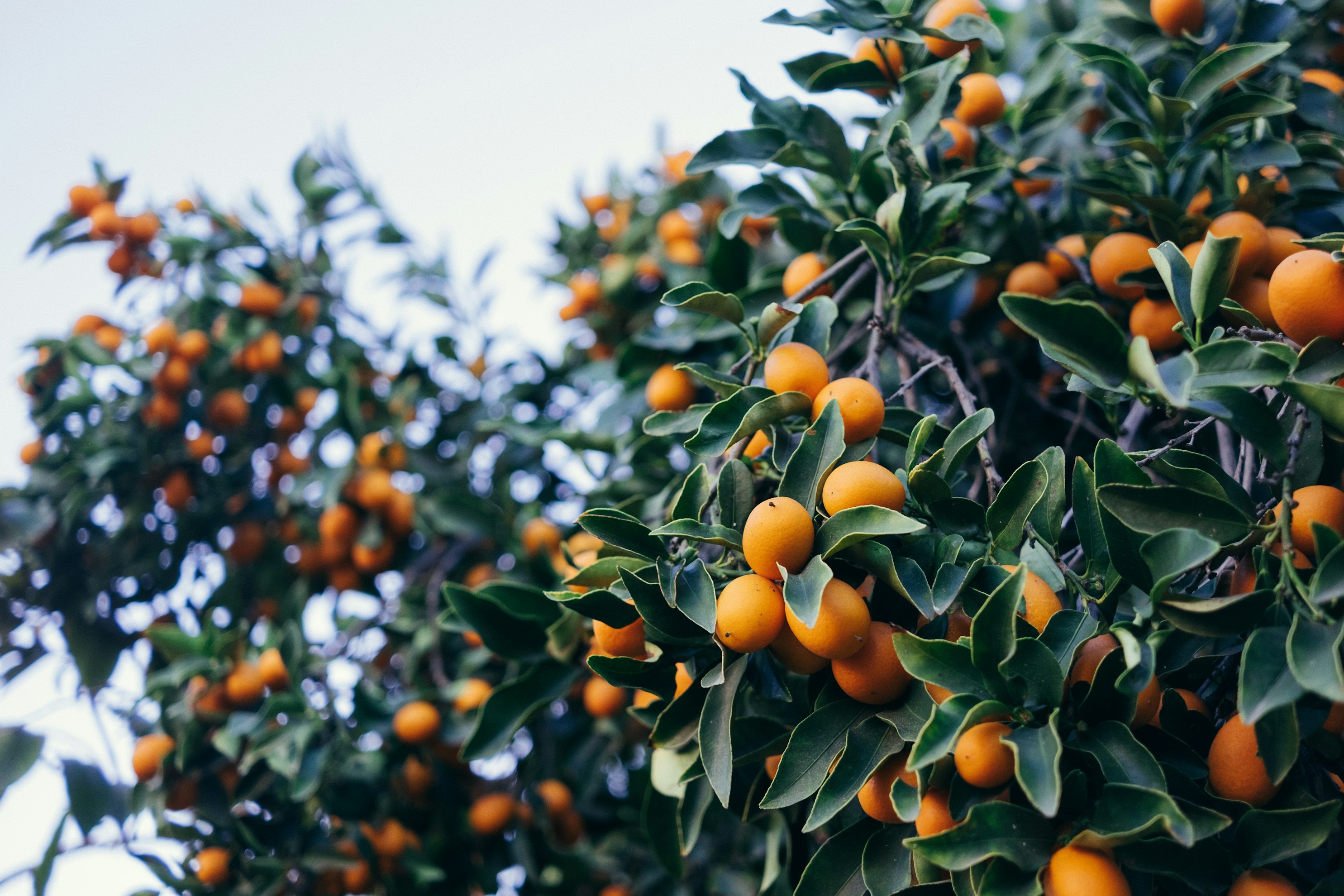Kumquats - botanical information, health and various uses
Kumquats are stunning little citrus trees that are admired for their compact size and refreshing fruit, making them an ideal addition to any garden or orchard. In this article, we will delve into the world of kumquats, providing valuable insights, botanical details, and practical tips for growing, harvesting, and using these unique fruits.

Kumquats - facts and botanical properties
Kumquat trees belong to the genus Fortunella, a subgroup of the larger citrus family. These small trees are native to Southeast Asia and can reach heights of 2 to 4 meters. Their glossy, dark green leaves are a perfect complement to the bright colors of the fruit.
Chinese orange varieties
Kumquats come in different varieties, but the two most common types are Nagami and Marumi. The Nagami is round in shape and usually about 2-4 centimeters long, with a sour and strong flavor. On the other hand, the Marumi is rounder and sweeter, making it recommended to eat fresh.
Blossom and fruit
Kumquat trees are known for their fragrant, star-shaped white blossoms that eventually turn into the delicious, bite-sized fruits we love. These fruits are unique, as they are one of the few citrus varieties with a sweet peel and a sour flesh inside.
Growth and climate
Kumquat trees prefer full sun, well-drained soil, and are suitable for both garden beds and growing in large planters.
Cultivation, growing and care of Kumquat trees
Planting a Kumquat tree begins with choosing a suitable location. Choose a spot with well-drained soil and plenty of sunlight. The ideal soil pH ranges from 5.5 to 6.5, providing an optimal environment for the tree to grow.
Site selection and soil preparation
Before planting, make sure the soil is enriched with organic matter such as compost. Aerate the soil to a depth of 30 centimeters and dig a hole twice the size of the existing root ball. Plant the Kumquat tree at the same depth it was in the pot it came from, water thoroughly, and cover with mulch to retain moisture.
Watering, fertilizing and mulching
Kumquats require regular watering, especially during the fruiting season. Fertilizer should be added at the beginning of growth in spring and late summer to promote its development and health. It is recommended to add soil mulch (wood chips, for example) to help maintain soil moisture and help control weed growth.
Pruning and pests
Pruning Kumquat trees should be done sparingly, focusing on removing dead or crowded branches. These trees are relatively pest-resistant, but aphid infestations can be addressed when development is seen on the tree or fruit.
Cultivation, growing and care of Kumquat trees
Best practices for harvesting
Chinese oranges are usually ready to harvest in the winter months. Gently twist and pull the fruit from the tree when it is fully orange. They can be stored at room temperature for a few days or refrigerated for extended freshness.
Culinary uses with Kumquats
Kumquats are amazing fruits in the kitchen. Their tartness makes them suitable for jams, preserves and desserts. The sweeter varieties are perfect for snacking, and add a sweet flavor to dishes, salads and desserts.
Non-culinary applications with Kumquats
Beyond the kitchen, Kumquats are also suitable as ornamental plants that are even suitable for growing indoors. Their bright fruits and fragrant blooms make them an excellent choice for growing in pots in your yard or balcony.
Cultural and symbolic meaning of the Kumquat tree
Kumquats are fruits with great symbolic meaning in many cultures around the world. They are often associated with prosperity, abundance, good luck, health, and positivity.
In Chinese culture, Kumquats are a symbol of good luck and prosperity. The Chinese word for orange, "Fuzhou" (福橘), contains the word "Fu" (福), which means "good luck". Therefore, Kumquats are considered a symbol of good luck, prosperity, and fertility. They are often exchanged during the Chinese New Year, the most important holiday in the Chinese calendar.
In Western cultures, Kumquats are often associated with happiness and positivity. They often appear in art and culture as symbols of hope, prosperity, and success. For example, in the United States, Kumquats are a common symbol of Christmas. They are often used to decorate trees and homes, symbolizing the fulfillment of wishes.
Kumquats - health benefits
Kumquats are a nutritional powerhouse, packed with vitamins C and A, fiber, and antioxidants. These nutrients support a healthy immune system, aid digestion, and promote skin and eye health.
Consuming Kumquats may help regulate blood sugar, improve heart health, and aid in weight management. The combination of sweet peel and bitter-sour flesh provides a unique blend of flavors and health benefits.
Kumquats - did you know?
Kumquats are one of the few fruits in which the peel is sweeter than the flesh of the fruit.
The name "Chinese orange" is derived from the Cantonese words for "gold" and "orange."
Kumquats are an excellent source of essential oils used in the perfume industry.
These fruits are often used in traditional Chinese medicine to treat various diseases.
The kumquat tree is considered a symbol of luck and prosperity in Chinese culture.
Summary
In conclusion, kumquat trees are a lovely addition to any garden, boasting not only a unique fruit but also rich cultural symbolism and numerous health benefits. Whether you grow them for their delicious fruit, their role in cultural traditions, or their nutritional value, kumquat trees are a fun and rewarding addition to your garden. Enjoy their abundant beauty and flavors.

_page-0001_edited.png)